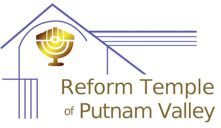A Message from Rabbi Sklarz
“It was the best of times…It was the worst of times.” It was the best of times
as more than 1,000 Reform Jews, representing the many colors and
orientations of the rainbow gathered together in our nation’s capitol to
celebrate the 150 th anniversary of the Union for Reform Judaism (formerly,
the Union of American Hebrew Congregations). Together we celebrated our
diversity, embraced our commonality and took a deep dive into issues
facing our movement and the larger Jewish world. On Shabbat our souls
united in prayer with liturgy and song representing fifteen decades of
Reform Judaism in America, and at the close of Havdalah, a thousand
voices joined together for the singing of Hatikvah.
As glorious as the event was, none of us could help but feel that Jews are
living in the worst – the most precarious of times since the Shoah, with the
horrors taking place in Israel and Gaza, and the unprecedented level of
global anti-Semitism. On Sunday morning, immediately prior to the closing
program, URJ president, Rabbi Rick Jacobs, shared that hotel security,
already on high alert, had intensified as “swatting” – calls for bomb threats,
to Jewish organizations throughout the nation were rampant. With his
announcement a dark cloud enveloped all of us, further shattering a false
sense of security that so many of us had long held, namely, that “Never
Again” meant “Never Again.”
The pride we should all feel in the remarkable accomplishments of Reform
Judaism, coupled with the nightmare that has been unfolding since October
7, has only strengthened my devotion to the Jewish people and
humanitarian concerns. Indeed, I feel a fire within me to stand up and be
counted as a Jew as that is stronger than ever.
We do not know what lies before us in the days ahead but may we ever
hold fast to the prophetic ideals so central to Reform Judaism, speaking out
whenever injustice rears its ugly head as we ever stive, to be a kingdom of
priests and a holy nation.”
